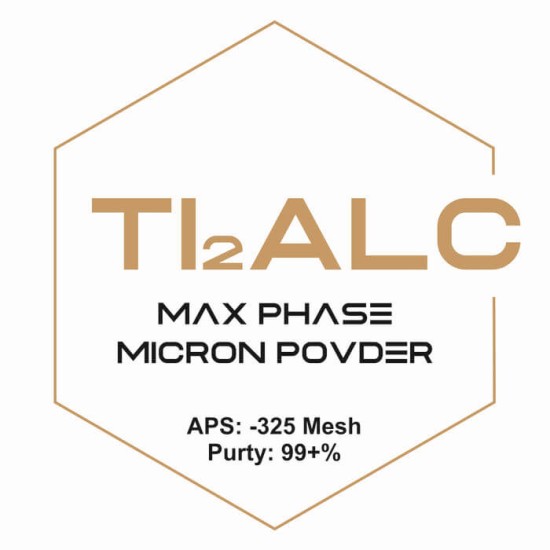
- Stock: In Stock
- Brand: Nanographenex
- SKU: GX01MPP0102
Available Options
Titanium Aluminum Carbide (Ti2AlC) MAX Phase Micron Powder, APS: 325 Mesh, Purity: 99+%
PRODUCT PROPERTIES
Mechanical Property | |
Compressive Strength (MPa) | 764 |
Bending Strength (MPa) | 375±15 |
Breaking Tenacity (MPa) | 7.2 |
Vickers Hardness (GPa) | 3.5 |
Young Modulus (GPa) | 297 |
Electrical Property | |
Single Conductivity | 2.9(25℃) |
Temperature coefficient of resistance (×10﹣3K﹣1) | 3.1 |
Thermal Properties | |
Coefficient of thermal expansion thermal expansivity | 9.0 |
Thermal shock resistance | Fine |
High temperature stability | Fine |
Certificate of Analysis (%)
Tİ | C | Al | Other impurity allowance (%) |
72.60 | 8.9 | 18.3 | 0.3 |
Titanium-aluminum carbide (TI-Al carbide) is a new type of three-layer structure ceramic material, which has been widely concerned by material scientists and physicists due to its unique properties. Titanium aluminum carbide (Ti2AlC) belongs to the hexagonal crystal system, and has the characteristics of metal and ceramics: it has the same conductivity and heat conduction as metal, but also has the same high elastic modulus and excellent high-temperature mechanical properties as ceramic, with good conductivity and heat conduction capability, high elastic modulus and low Vickers hardness, and good damage resistance capability. It can be machined at room temperature and produce plastic deformation at high temperature. It also has good high temperature stability and oxidation resistance. It also has good thermal shock resistance, damage resistance and excellent chemical corrosion resistance. MAX phase ceramics (including Ti3SiC2, Ti2AlC, etc.) is a new type of processable conductive ceramics. These ceramics contain more than sixty ternary carbides or nitrides. M stands for the front metal element of the transition group; A represents the elements of the main group, mainly the elements of the third group and the fourth group; X is for carbon or nitrogen. Ti3SiC2 is the most widely studied. Ti3SiC2 was successfully synthesized by hot pressing in 1996 by Professor Barsoum M of Drexel University in the United States and its excellent properties were found. Due to its unique nanometer layered crystal structure, this kind of ceramic material has such properties as oxidation resistance, self-lubrication, high fracture toughness at room temperature and conductivity. This kind of material can be widely used as high temperature structural material, electrode brush material, chemical anticorrosive material and high temperature heating element. The products are mainly used for high temperature coatings, MXene precursors, conductive self-lubricating ceramics, lithium ion batteries, supercapacitors, electrochemical catalysis.




